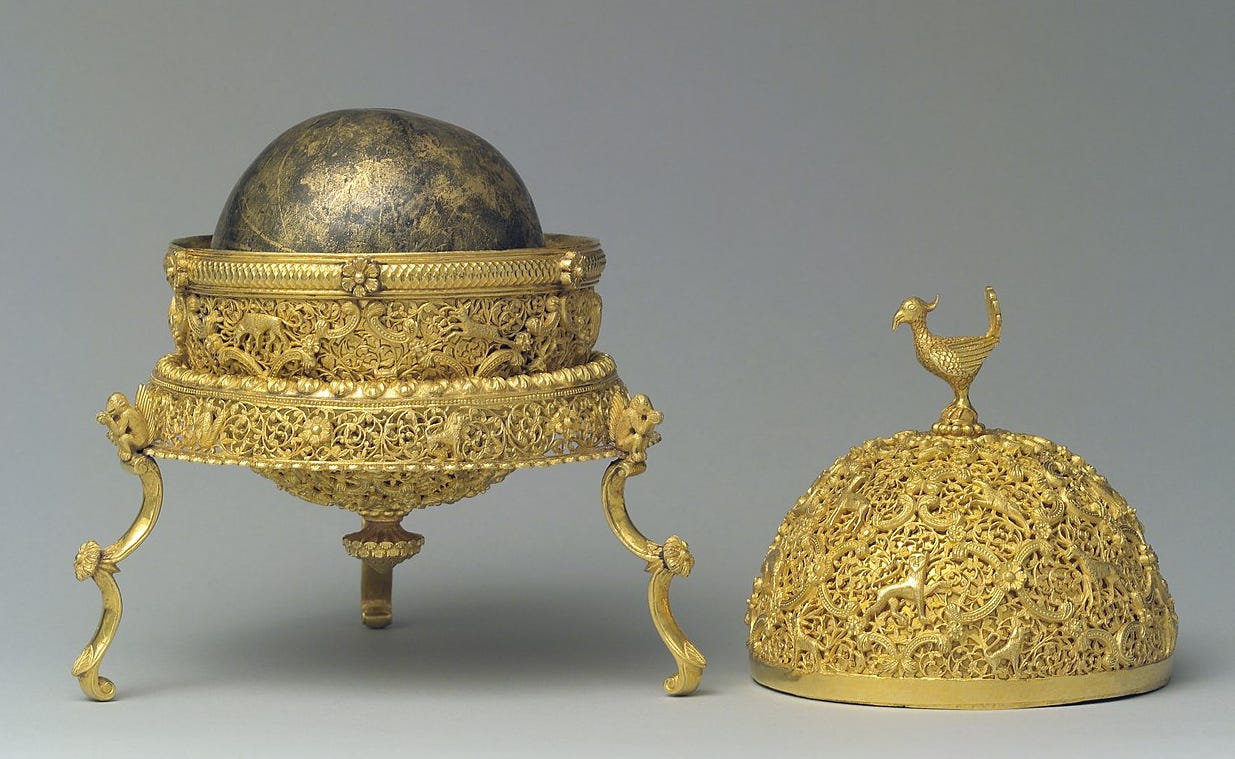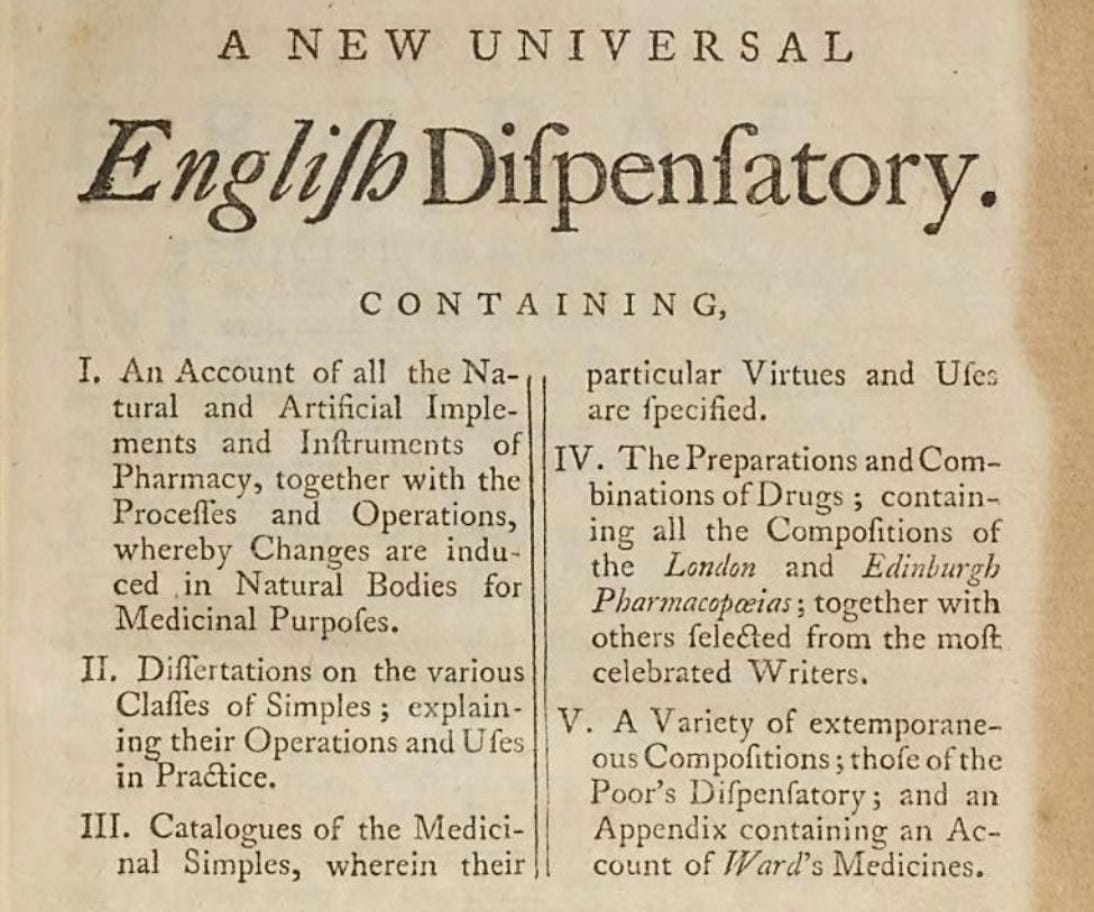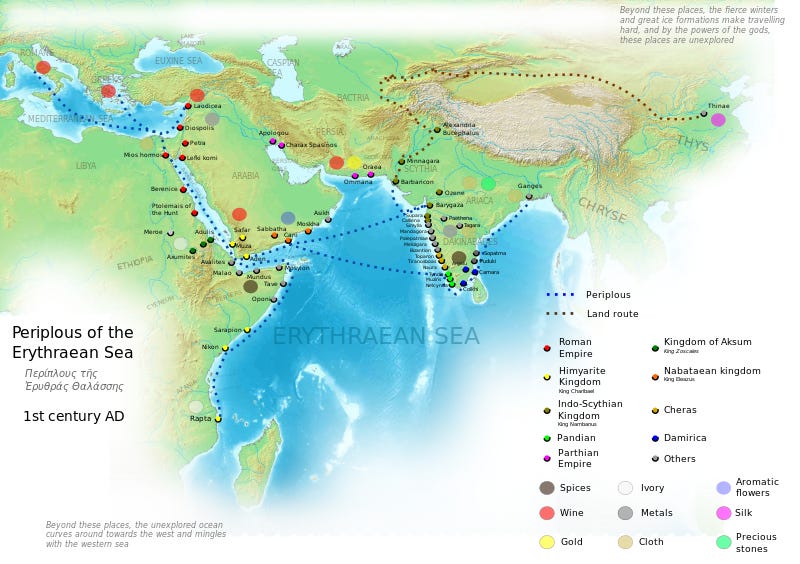

The (history of) spice must flow
source link: https://resobscura.substack.com/p/the-history-of-spice-must-flow
Go to the source link to view the article. You can view the picture content, updated content and better typesetting reading experience. If the link is broken, please click the button below to view the snapshot at that time.

The (history of) spice must flow
Why the spice trade is even more important for world history than you might have thought
To me, one of the most intriguing objects housed in the Metropolitan Museum of Modern Art in New York is a container for something that few people have ever heard of: the lapis de Goa, or “Goa stone.”
Goa stones were a compound of gold, crushed gemstones, herbs, bezoars, and other exotic substances popular in the 1690-1750 period. Like the bezoars they imitated, they were thought to offer a powerful protection against poisoning. Tiny flakes would be shaved off and consumed (I picture them being dropped in wine glasses) by wealthy consumers in India and Europe. As you can no doubt tell from the incredibly lavish decoration of this particular Goa stone container, they were extremely valuable.
Last week, in “Why drug history?”, I argued for the usefulness of drugs and spices for helping us to better understand important aspects of human history. But aside from mentioning Paul Freedman’s great book Out of the East: Spices and the Medieval Imagination, I didn’t dig much into the spice trade per se.
This is partly because I tend to subsume spices intothe category of drugs. I agree with Freedman’s approach of seeing spices, herbs, medicinal animal products, and even gems as all occupying the same amorphous category in the medieval and early modern periods. They were all medicinal simples, the raw materials out of which drugs were made.
As Freedman explains, spices were a category of simples that moved fluidly between the culinary and medical realms:
All of these substances—plants, animal products, gems— were ‘simples’ and could be combined to form various compounds. Pharmacists had to know how to grind up mixtures of simples according to medical instructions or their own ingenuity. Pounding and grinding together these aromatic products was a tedious task and became a symbol of the art and labor of the medical or culinary expert in spices, the cook and the pharmacist. The mortar, an emblem of sophisticated cooking in the Middle Ages because of its use in grinding spices, has remained the preeminent symbol of pharmacists, just as the word ‘recipe’ in most languages means both instructions for cooks and prescriptions for druggists, a reminder of the conceptual similarity of the two professions.
It’s not hard to see the blurring between the culinary and the medical if you read premodern writings about drugs. In my first book The Age of Intoxication, for instance, I cite the case of Bahadur, a sultan of 16th century Gujarat who (according to the Portuguese physician Garcia de Orta) ate a kind of sweet, spiced candy composed of sugar, nutmeg, mace, camphor, opium, and cannabis which supposedly allowed him “to go to Portugal or Brazil or Turkey or Arabia or Persia” via hallucinatory, drug-induced dreams.
As a kid, I remember our history class featuring a module on the spice trade in which we learned about its importance to the Silk Road, along with lots of fun trivia about things like the Biblical significance of frankincense and myrrh and the fact that nutmeg originally only grew on one small island chain. But it wasn’t until I became a professional historian that I realized just how foundational the hunger for spices has been in human history. The trade routes of the Indian Ocean world, for instance, are among the most long-lasting and significant long-distance trade links in human history.
And if you dig into their origins roughly three to four thousand years ago, you find… cinnamon.
Cinnamon and cassia merchants, and later other traders in spices, were the pioneers of the Indian Ocean trade routes linking Southeast Asia to the Red Sea.
By the Roman period, the trade between India and the Mediterranean had diversified quite a bit. But even so — as this map based on an important 1st century Greco-Roman primary source indicates— spices and drugs were still at the center of things.
One of the big questions that motivates my own research into the history of drugs and spices is… why? Why did so many millions of humans, over thousands of years of history, risk their lives to transport these sorts of exotic substances — which are clearly not essentials of human life — over long distances? Why did people want them so much?
Here Ruth Benedict — the famed cultural anthropologist who was an important mentor of Margaret Mead’s — can help us. Benedict’s important role in rethinking the history and anthropology of visionary states in general (and drug-induced states in particular) is discussed on page 23 of my just-published book Tripping on Utopia:
Ruth Benedict’s 1922 article “The Vision in Plains Culture” (one of the works that inspired Mead to become an anthropologist) had offered an especially influential new perspective on peyote. Western scientists, Benedict noted, assumed that altered states of consciousness reduced the capacity for thought—that they were a form of intoxication. But what if the pursuit of visionary states was, in some cultures, a constructive goal? In these “Dionysian” cultures, as she dubbed them, visionary or trance states offered a source of new knowledge, mutual understanding, and social cohesion, not an escape into fantasy.
Drugs which induce altered states of consciousness or altered experiences of the world, in other words, have played an important (and, crucially, a constructive)cultural role in many societies around the world. The sultan Bahadur, after all, was not a stigmatized member of an out group. He was, well… the sultan.
But of course, most drugs and spices which have played a major role in world history do not alter mental states in anything like the ways that opium or peyote do. They are more like nutmeg, sugar, or tea: slightly mood-altering, perhaps. Intriguing, certainly. But not pathways to visionary states, or, for that matter, to the curing of a disease.
For these substances, the work of Paul Freedman on the medieval spice trade is especially helpful. In the chapter in Out of the East which focuses on “Spices as Drugs,” he writes:
Although medical experts likened their putative occult and (in terms of the science of the era) inexplicable effects to the action of a magnet in attracting iron, spices don't seem to have been as reliable, as shown by the multiplicity of often contradictory recipes. This is important, not merely to show the deficiencies of medieval pharmacology, which are now self-evident, but to get an idea of what people thought medicines could do and what they were for. It is not as obvious as saying that spices cured or prevented disease, because drugs were used not just to treat illness but to induce a more general, pleasurable atmosphere of well-being.
This, I think, is an important distinction. Exotic drugs like the Goa stone, for instance, were often credited with saving the lives of users who had been poisoned. But it is also common to see them praised for “dispelling melancholy” or “lightening the spirits” and similarly vague terms. That search for a “pleasurable atmosphere of well-being” is, I think, a deeply underrated aspect of human nature.
When we learned about the spice trade in 6th grade, I remember being told that spices were so valuable because medieval people used them to preserve meat.
This, it turns out, is a myth.
But I think part of why its been such a persistent myth is that people want to try to find a practical, utilitarian explanation for why so many human cultures over so many years have valued spices so highly.
The truth is fuzzier. Personally, I believe spices and drugs became such an important element in human history because they enlivened everyday experience — and because they made the consumer stand out.
Historians sometimes tackle the same concept with phrases like “charismatic goods” or “charismatic substances.” In other words, substances like Goa stones were (and are) not only visible, but consumable differentiator signaling social and cultural status. They were manifestations of mimetic desire.
Why does this matter?
Part of why I’m a historian of both science and drugs is that they are linked forces in world history. The hunger for spice and drugs helped to create persistent trade networks. These, in turn, allowed for the long-distance transmission of ideas — and the travels of individual people.
The remarkable Arcadio Huang (1679-1716) is one such person. Huang’s 1701 sea voyage from a port in China to London, and then to Rome and Paris, followed the same Indian Ocean routes that had been established two thousand years of spice and drug merchants. I will be writing more about Huang and his fascinating story next week.
Weekly links:
• If you missed it, I wrote about the deep history of psychedelic drugs in one of my earliest posts for this newsletter last year.
• “Is history a matter of individual agency and action, or of finding and quantifying underpinning structures and patterns?” (Aeon)
• “As a scholar who researches the history of Western fears about human extinction, I’m often asked how I avoid sinking into despair. My answer is always that learning about the history of extinction panics is actually liberating, even a cause for optimism… Nearly every generation has thought its generation was to be the last, and yet the human species has persisted. As a character in Jeanette Winterson’s novel The Stone Gods says, ‘History is not a suicide note — it is a record of our survival.’” (Tyler Austin Harper, writing in The New York Times. This one resonated quite a bit with my own recent experiences teaching world history).
If you received this email, it means you signed up for the Res Obscura newsletter, written by me, Benjamin Breen. I started Res Obscura (“a hidden thing” in Latin) to communicate my passion for the actual experience of doing history. Usually that means digging into historical primary sources, in all their strange glory.
If you liked this post, please consider forwarding it to friends.
Recommend
About Joyk
Aggregate valuable and interesting links.
Joyk means Joy of geeK


